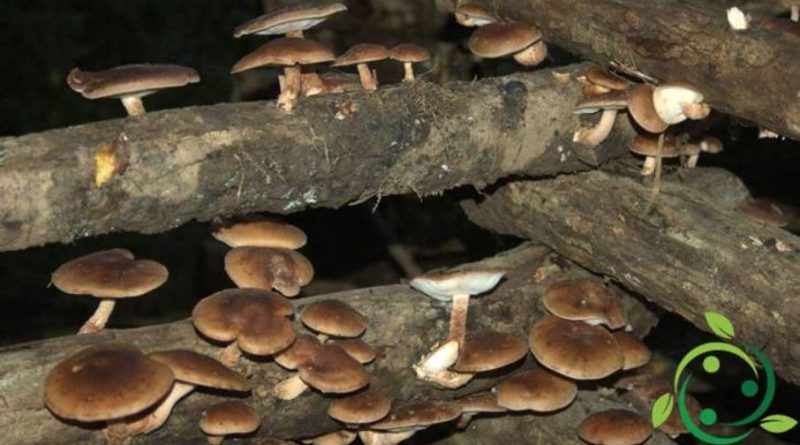How to grow the Shiitake
How to grow the Shiitake
The Shiitake (Lentinula edodes (Berk.) Pegler, 1976) is a fungus of the family Omphalotaceae of Asian origin and is currently the second most consumed edible mushroom in the world, this makes us understand the interest that there is around its cultivation, which in fact, it can be performed well even at an amateur level. In this contribution we will see how to cultivate the Shiitake, the techniques, the substrates and the optimal conditions. The starting point of the cultivation is to have enough fresh wooden logs that can be easily inoculated with the mycelium; subsequently, after an incubation period, they can be partially buried in your garden until the first fungi appear. You have to choose small trunks of Poplar, Willow, Beech or other broadleaves, fresh and healthy, discarding old ones or with traces of mold. Once these logs are procured you have to keep them soaking for 2-3 days so that the wood is soaked well, after which it is advisable to sterilize this material by immersion in boiling water for a few minutes to eliminate any unwanted mold.
Separately, you will have to prepare the sawdust obtained with the same wood of the logs, immersed in boiling water and obviously kneaded with cooling.
When the logs are cooled, you can proceed with the inoculation of the mycelium (which you can easily buy online too). The mycelium will be inserted into holes made on the logs with a new drill bit and disinfected. The holes (with a diameter of 0.8-1 cm and a depth of 4-5 cm) should be spaced 15-20 cm apart and before inserting the mycelium, make sure that they are soaked in water, otherwise moisten them again. Once all the holes have been prepared, you can switch to the insertion of the mycelium in them, making sure to close immediately with freshly prepared sawdust.
The logs thus prepared are then put to incubate in a transparent plastic bag moistened at a temperature of 20-25 ° C for about 3 months. At the end of this period the mycelium, identifiable by a whitish mass, should be very evident on all the wood.
At this point the logs will be removed from the bags, put to fructify in the garden, away from sunlight and winds, taking care to ground them for about two thirds. In the absence of a garden, a similar operation can be done in apartment or garage premises. It is necessary to find capacious jars where to bury the logs, taking care to keep the room temperature between 10 and 25 ° C. At this point both in the garden and in the pot, it is necessary to ensure, for the whole period that will pass before the entry into production (which will take place after 4-7 months), to keep both the logs and the substrate in which they are constantly immersed moist but not flooded. A further alternative is to stack the logs one on top of the other, in a room where there is a water mist system that keeps the environment and logs dry. The production of mushrooms will take place both in spring and autumn and, if you keep the optimal conditions, it will last for 3-4 years.
There are other methods for producing this fungus such as to inoculate it in mixtures of sawdust with other organic compounds (coffee grounds, humus, etc.) but this is a good method; technically very controlled and with a very high general process hygiene.

